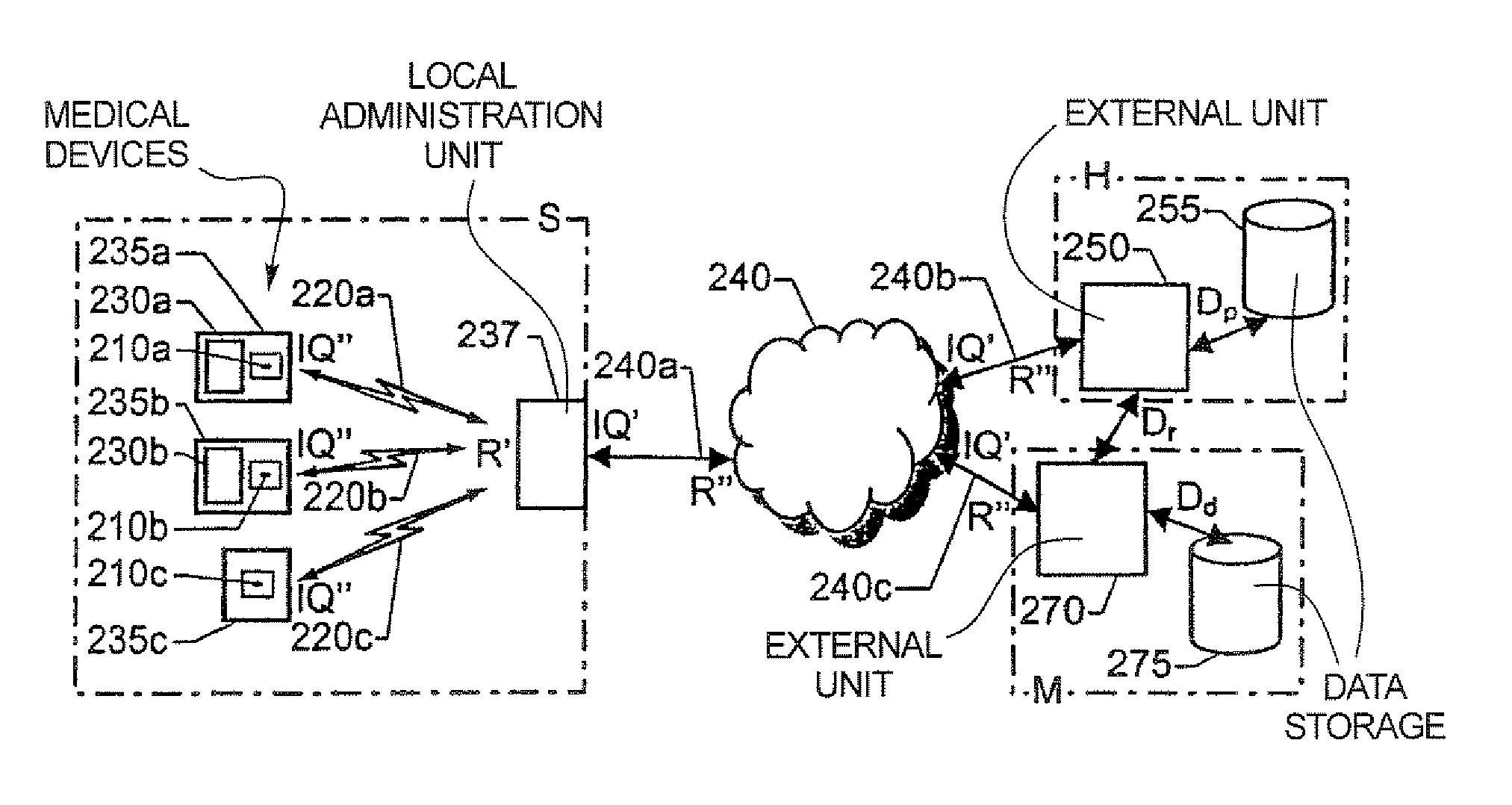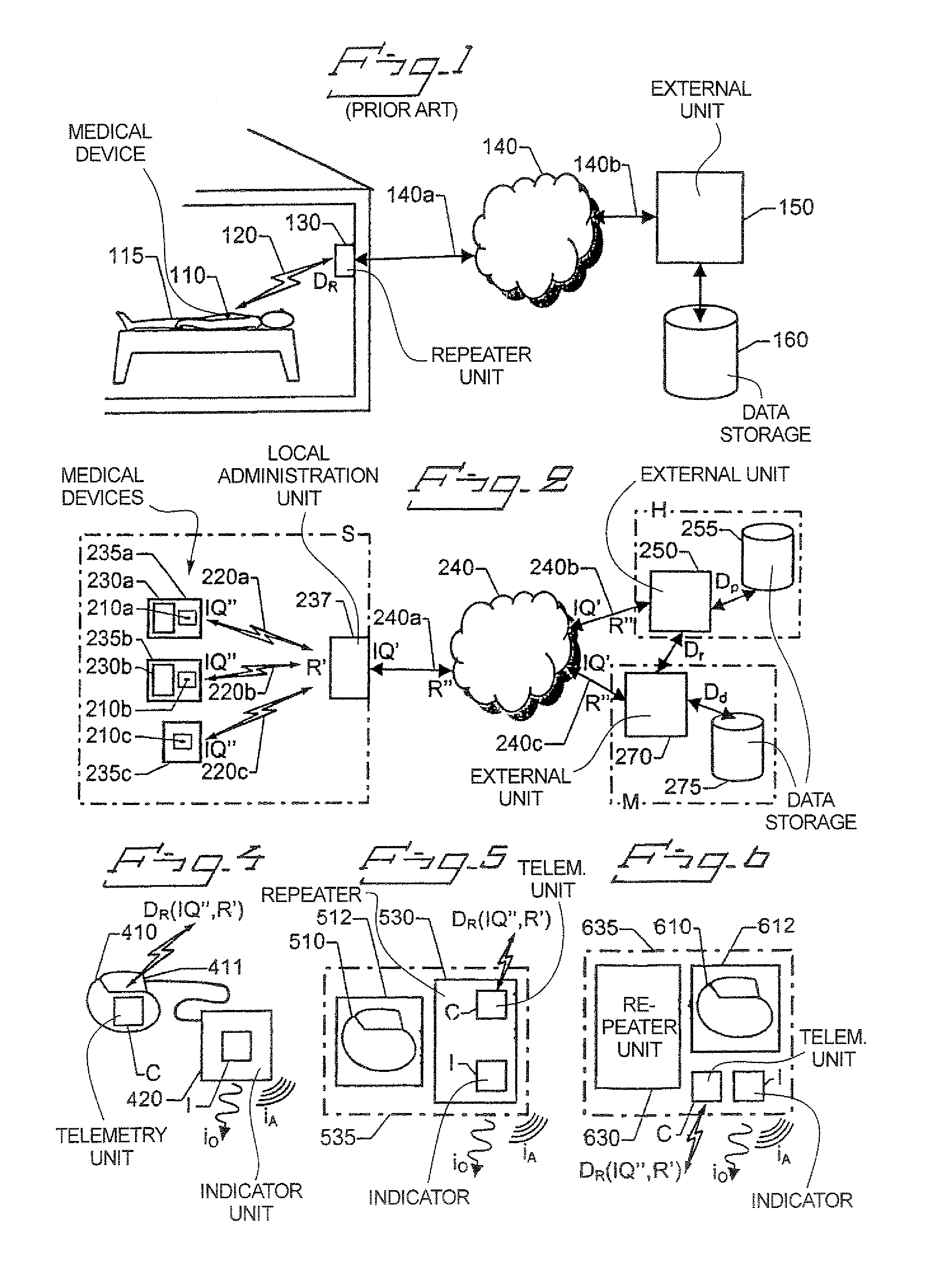Management of implantable devices
a technology of implantable devices and management systems, applied in the field of implantable medical devices, can solve the problems of no solution for administering imds, resource and time consumption, and the difficulty of finding each relevant device,
- Summary
- Abstract
- Description
- Claims
- Application Information
AI Technical Summary
Benefits of technology
Problems solved by technology
Method used
Image
Examples
Embodiment Construction
[0038]FIG. 2 shows a system for organizing not yet implanted IMDs 210a, 210b and 210c respectively according to an embodiment of the invention. Each of the IMDs 210a, 210b and 210c are associated with a respective telemetry unit for wireless data communication. A local administration unit 237 is positioned within the communication ranges of the telemetry units of the IMDs 210a, 210b and 210c, i.e. relatively proximate to the devices. The local administration unit 237 may thus communicate with the IMDs 210a, 210b and 210c over a wireless interface 220a, 220b and 220c to their respective telemetry units. Preferably, the IMDs 210a, 210b and 210c are gathered in a storage area S at, for example a manufacturer M, a hospital H or a retailer. Depending on various conditions (such as type, model, version, buyer preferences etc.) the devices 210a, 210b and 210c may be packaged differently. Here, a first device 210a is packaged in a first device box 235a together with an associated first repe...
PUM
 Login to View More
Login to View More Abstract
Description
Claims
Application Information
 Login to View More
Login to View More - R&D
- Intellectual Property
- Life Sciences
- Materials
- Tech Scout
- Unparalleled Data Quality
- Higher Quality Content
- 60% Fewer Hallucinations
Browse by: Latest US Patents, China's latest patents, Technical Efficacy Thesaurus, Application Domain, Technology Topic, Popular Technical Reports.
© 2025 PatSnap. All rights reserved.Legal|Privacy policy|Modern Slavery Act Transparency Statement|Sitemap|About US| Contact US: help@patsnap.com



